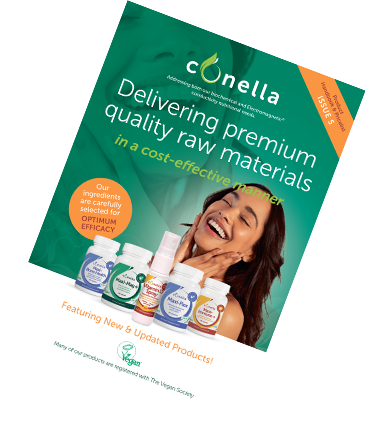For those who’ve followed the news in recent weeks, the hot topic on everyone’s lips has been face masks, and whether these are actually effective in protecting wearers against covid-19. Even among experts, there is no absolute consensus, which has led to disagreement over whether the latest rules – requiring face masks to be worn in shops and supermarkets – are a necessary evil or simply an attempt to convince the masses that the government is being proactive in protecting public health.
This argument is not a new one. In fact, for many years there has been an ongoing debate about the effectiveness of masks in helping to reduce the spread of infection, primarily with regards to health professionals. While these have long been donned as a matter of course during surgeries, studies indicate that they do not decrease the risk of contracting the common cold, and may even increase the chances of health workers catching flu-like illnesses.
In addition, there is compelling evidence to suggest that cloth masks become 20 per cent less effective after being washed and dried a mere four times, as well as increasing the prevalence of headaches among medical professionals and decreasing oxygen levels.
For this reason, the World Health Organisation has been proactive in developing strategies to make mask-wearing more effective, suggesting that proper hand washing should be practised before and after removal and that masks should be replaced as soon as they become damp.
Can face masks be effective in reducing transmission?
In light of the covid-19 pandemic, the debate surrounding face masks and their efficacy in reducing the transmission of diseases has once more reared its head. With regards to how helpful or otherwise these may be, it’s difficult to give a definite answer, especially considering that not even health agencies are in agreement on this.
According to the World Health Organisation, one of the most trusted medical bodies, medical masks should be worn by certain groups in particular, including healthcare workers and individuals caring for those with symptoms of covid-19. Other demographics who are particularly at risk and therefore urged to don face coverings include over 60s, those with pre-existing conditions, and anyone with symptoms of the disease.
Similarly, the Centre for Disease Control and Prevention (CDCP) states that medical masks should be worn by healthcare professionals, while members of the public should opt to wear cloth masks in any areas where people tend to congregate.
The reason the CDCP makes this distinction is due to the worldwide shortage of surgical masks and N95 respirators, hence their urging to boycott medical masks and leave these available for healthcare workers and first responders.
However, the CDCP does state its belief that cloth face masks will not stop wearers from getting sick, so does this mean that wearing them is a waste of time? In short, the answer is ‘no’; while cloth face masks will not stop you from catching covid-19, the health agency states that they can prevent the virus from spreading to those you come into contact with.
This is a view a number of medical experts and prominent politicians agree with, including the National Institute of Allergy and Infectious Diseases’ Dr Anthony Fauci and former CDCP director Dr Richard Besser.
Aligning with this view are some interesting statistics, which indicate that those countries which have been proactive in requiring face masks to be worn have lower rates of covid-19 transmission. However, what has not yet been ascertained is whether this is due to the mask-wearing itself or the masks acting as a visible reminder to social distance.
Is there research to support wearing masks?
It’s been around 100 years since surgical masks were first introduced as a means of protecting patients and healthcare professionals during surgery, yet there's still no definitive answer as to their efficacy and effectiveness.
Indeed, in a study published in 2016, researchers discovered that there was no discernible difference in infection rates among patients undergoing surgery, irrespective of whether the medical team performing their procedure wore masks or not.
It's also unclear whether wearing masks during cold season can help to reduce the incidence of healthcare workers getting sick. In a study performed on the subject, one group was asked to wear masks while another went without.
Those participating were studied for 77 consecutive days, with a single member from each group falling ill. The researchers thus concluded that there was not sufficient evidence to suggest that masks could be effective in protecting against these types of illnesses.
Further research on the topic was conducted in 2015, with a study published in the British Medical Journal. Its aim was to discover whether medical masks were more effective than their cloth counterparts. It involved 1,607 participants, all of them working on high-risk hospital units.
The results were interesting. The study specifically looked at the incidence of respiratory illnesses, flu-like illnesses, and confirmed respiratory infections among this group, and found that those who wore cloth masks were significantly more likely to become infected.
A number of reasons for this discrepancy were suggested, including poor filtration, moisture retention, and reuse, which, in combination, were believed to increase rates of infection among healthcare workers.
The team thus concluded that cloth masks should not be recommended for healthcare workers – particularly those who were exposed to high-risk situations.
Can cloth masks protect you against covid-19?
In light of these findings, you might be questioning whether cloth masks can actually offer you any real protection. The answer is not a simple ‘yes’ or ‘no’.
In the current climate, there has been much discussion relating to the shortage of personal protective equipment, particularly among vulnerable groups such as healthcare workers. While the team involved in the 2015 study above found that cloth masks were significantly less effective than medical-grade masks, they have nonetheless stated that, in light of the current pandemic, they're still better than wearing no mask at all.
An additional study, carried out in America just prior to the pandemic, also yielded some interesting results. The idea behind it was to see whether low-cost cloth face masks could be effective in reducing transmission rates, as these materials are often used in hospitals and health facilities in developing countries.
As part of the study, 20 different types of cloth mask were trialled, with pore sizes that ranged from 80 nanometres to 500. The team discovered, pertinently, that effectiveness is reduced after four cycles of being washed and dried, by a significant 20 per cent. That’s because surfaces are stretched as a result of this process, altering pore size and curtailing the mask’s efficacy.
Additional research has also looked at reducing airflow in face covers using an outlet valve. It discovered that where an outlet valve was not present, forward flow decreased by more than 90 per cent. It also found that those wearing surgical masks, face shields, and cloth masks experience notable back and downward flow, which can present a hazard in itself.
Are there any risks associated with wearing a mask?
Following on from the point above, there are certain risks involved in wearing face masks, although none pose any significant dangers to health. A study carried out in Asia, for example, specifically looked into the effects of wearing masks on healthcare workers, and found that the incidence of headaches was much higher among this group.
More recently, research published in the journal Headache looked into how this trend affected the health and performance of medical staff. Specifically, they studied those clinicians who were involved in the care of covid-19 patients.
The study focused on data gathered from 158 medical professionals, including doctors, nurses, and paramedical staff. During the course of their research, 128 of these individuals suffered from headaches relating to their personal protective equipment.
In addition, the team asked those who had previously suffered from headaches whether they felt their condition was worsened by having to wear PPE, and whether this adversely affected their professional performance. 91.3 per cent ‘agreed’ or ‘strongly agreed’ with this statement.
While the study did not consider the factors that may have contributed to these headaches, others have suggested that it could be because masks reduce oxygen levels or raise the CO2 in our bodies, thus triggering these symptoms.
Can face masks lead to decreased oxygen saturation?
On this last point, an interesting study conducted in 2008 considered whether oxygen saturation can be adversely impacted by face masks. The research studied 53 surgeons during procedures, using a pulse oximeter to measure their levels both before and after surgery.
The team found that the surgeons saw a decline in their oxygen saturation when tested post-procedure, as well as a slight elevation in their pulse rate. It was noted that this decrease was more noticeable in surgeons who were aged 35 plus.
However, what the study could not confirm were the causes behind this phenomenon. While the mask itself could potentially have a part to play, it was also suggested that stress could be a key factor in this decline.
The results of this research were thus deemed inconclusive, yet Dr Russell Blaylock, a retired neurosurgeon, has nonetheless cautioned against wearing masks, suggesting that as well as failing to protect against disease, face coverings can also pose serious risks to the wearer.
Indeed, he has been vocal in condemning the widespread use of masks among both vulnerable and healthy individuals, stating that: “When a person has [tuberculosis], we have them wear a mask, not the entire community of non-infected.”
To support this assertion, he referred to a 2006 study which looked into the development of headaches in medics wearing a N95 face mask. This indicated that 37.3 per cent of those surveyed suffered from mask-related headaches, with 32.9 per cent of respondents claiming that these occurred at least six times a month.
As a result, the researchers in this study suggested that N95 masks notably increased the likelihood of headaches among healthcare professionals, and suggested that wearing them for shorter periods of time might be one way to lessen both their occurrence and severity.
Dr Blaylock also went on to caution that when a mask is worn, it can cause those with respiratory viruses to constantly rebreathe their own germs, increasing the concentration of the virus in their lungs and nasal passages. He suggested that this was a particular danger re coronavirus, where research has indicated that those who have the most severe symptoms tend to have a higher virus concentration.
Can neurological infections enter through the nose?
An additional concern raised by Dr Blaylock was whether masks can reintroduce exhaled viruses into the nasal cavity, and in doing so, increase their concentration in the upper respiratory tract. If this is the case, he cautioned, this would enhance the potential for entry into the olfactory nerves and brain.
Another group of experts, this time writing in the New England Journal of Medicine, suggested that encouraging populations as a whole to wear masks is little more than a knee-jerk reaction to anxiety over the pandemic. They pointed out that covid-19 is usually not transmitted via passing interactions but through sustained face-to-face contact with someone who is infected for at least two to three minutes, making mask-wearing largely redundant.
This means that while masks can play an important role in protecting medical professionals, who are likely to be in close proximity to patients with active and symptomatic coronavirus, they will not be as effective in safeguarding individuals who wear them to pop to their local shop.
In addition, the authors of a paper published in the Journal of the American Medical Association suggest that while mask-wearing among individuals displaying respiratory symptoms, such as coughing, sneezing, or fever, should be encouraged, there’s no evidence to indicate that healthy individuals wearing them will in any way halt the transmission of covid-19.
How can I safely wear a mask?
While opinions on mask-wearing remain divided, even among the medical community, there's still some small evidence to suggest that doing so can reduce the spread of coronavirus, so you may wish to don a face covering when you do go out and about in public.
If you would like to wear a mask, the World Health Organisation recommends certain strategies for doing so safely. These include:
• Cleaning your hands with soap and water before putting your mask on.
• Making sure your mouth and nose are fully covered by the mask, and that there are no gaps between your face and the fabric.
• Not touching your mask while in use, and if you must do so, making sure your hands are clean by using an alcohol-based sanitiser or soap and water.
• Replacing your mask with a new one once it grows damp.
• Making sure you do not reuse single-use face coverings.
• Removing your mask from behind when you take it off, and cleaning your hands once you have disposed of it.


We would like to wish you A Very Happy Festive Season from everyone at Conella.
Over the holiday period, we have adjusted our opening times to ensure our team can enjoy the festivities as well. Therefore, our phone lines will be closed as from the 19th December 2025 and will reopen on January 5th, however, we will be monitoring our emails and website messaging system. Our dispatch team will be fulfilling orders every day, with the exception of 25th December and 1st January.
Customer satisfaction Reviews
Customer satisfaction Reviews
- 2025
- 2022
- 2021
- 2020
- 2019
- 2018
- 2017

The Justfil logo indicates that the product has not had any artificial colours or additives added to them in the encapsulation process. However, on rare occasions there might be some compound additive ingredients within the production of the original raw material, these are clearly indicated on the product label.








